Yowah Nut Opal is a type of precious opal found exclusively in the small town of Yowah, located in Queensland, Australia. It’s named after the town where it’s primarily mined and is renowned for its distinctive appearance and unique characteristics
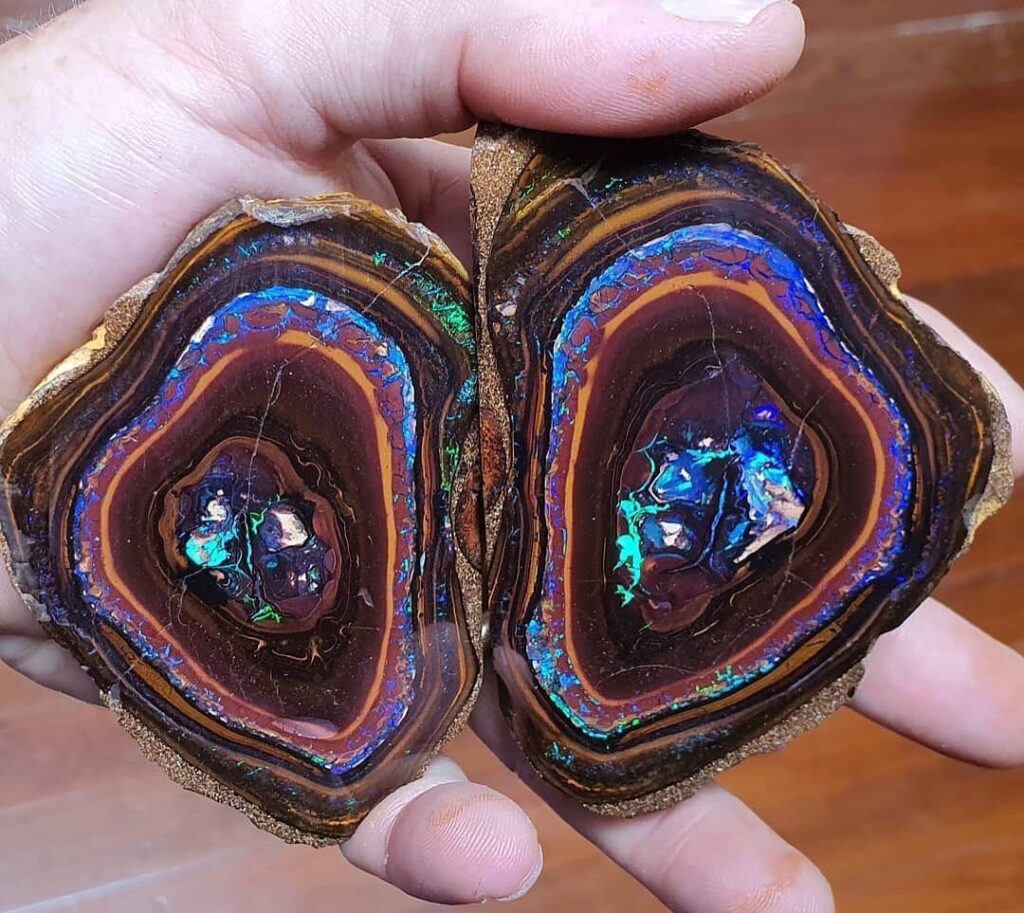
Unlike other types of opal, which typically form within rock formations, Yowah Nut Opal forms within ironstone concretions, which are colloquially referred to as “nuts” due to their rounded shape resembling nuts or nodules. These nodules can range in size from small pebbles to large boulders, and within them, opal forms in intricate patterns and vibrant colors.
One of the most remarkable features of Yowah Nut Opal is its play-of-color, which refers to the mesmerizing display of spectral colors that dance and shimmer when the opal is viewed from different angles. This optical phenomenon is caused by the diffraction of light as it passes through the microscopic silica spheres that compose the opal.
Another distinguishing characteristic of Yowah Nut Opal is its matrix, which refers to the host rock in which the opal is embedded. This matrix often contains intricate patterns and designs, adding to the opal’s overall aesthetic appeal.
Yowah Nut Opal is highly prized by collectors and enthusiasts for its rarity, unique formation process, and stunning beauty. Its distinctiveness makes it a sought-after gemstone in the world of opal enthusiasts and collectors.
Geological Formation
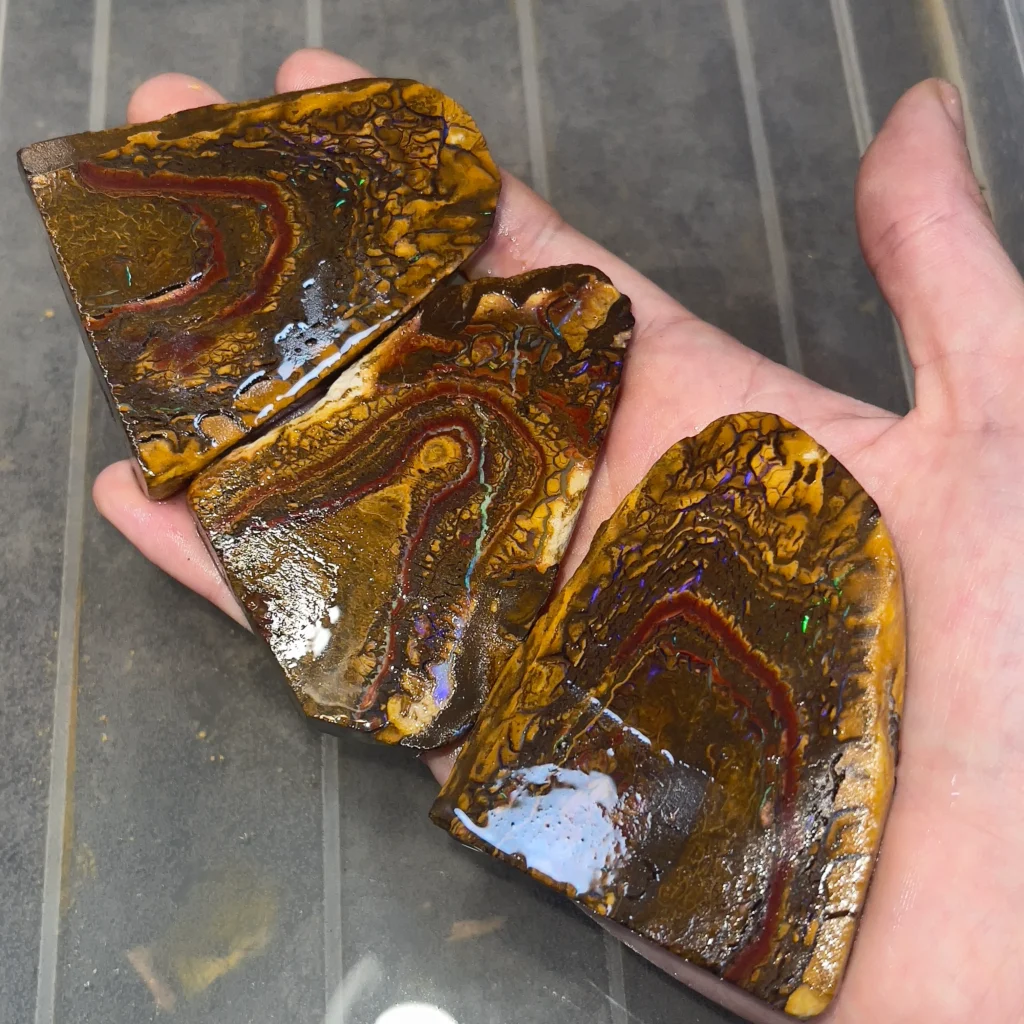
Yowah Nut Opal forms through a fascinating geological process that sets it apart from other types of opals. The formation begins millions of years ago when silica-rich water flows through the sedimentary layers of ironstone in the Yowah region of Queensland, Australia. This silica-rich solution permeates through the ironstone, depositing tiny silica spheres in the cavities and cracks within the rock.
Over time, these silica spheres accumulate and gradually solidify into opal. However, what makes Yowah Nut Opal unique is that it forms within spherical or ellipsoidal nodules of ironstone, commonly referred to as “nuts” due to their shape. As the opalization process occurs within these nodules, it creates intricate patterns and vibrant colors, giving rise to the mesmerizing play-of-color characteristic of opal.
Several geological conditions are necessary for the formation of Yowah Nut Opal:
- Presence of Ironstone: Yowah Nut Opal forms exclusively within ironstone concretions, which provide the necessary framework for opalization to occur. The ironstone acts as a host rock, providing the cavities and structure for the opal to develop.
- Silica-rich Water: The presence of silica-rich water is crucial for the deposition of silica spheres within the ironstone nodules. This silica-rich solution comes from geological processes such as weathering and leaching of silica-rich rocks.
- Time: The formation of opal is a slow process that occurs over millions of years as silica gradually accumulates and solidifies within the ironstone nodules. The intricate patterns and play-of-color in Yowah Nut Opal develop over this extended period.
Comparing Yowah Nut Opal with other types of opals, such as Australian black opal or Mexican fire opal, reveals significant differences in their geological formation. While Yowah Nut Opal forms within ironstone nodules, black opal typically forms in sedimentary rocks such as sandstone, and fire opal is found in volcanic rocks. Additionally, the play-of-color in Yowah Nut Opal is often more subtle and diffused compared to the striking flashes of color seen in black opal. Each type of opal has its own unique geological origin, contributing to its distinct appearance and characteristics.
Yowah Opal Mining
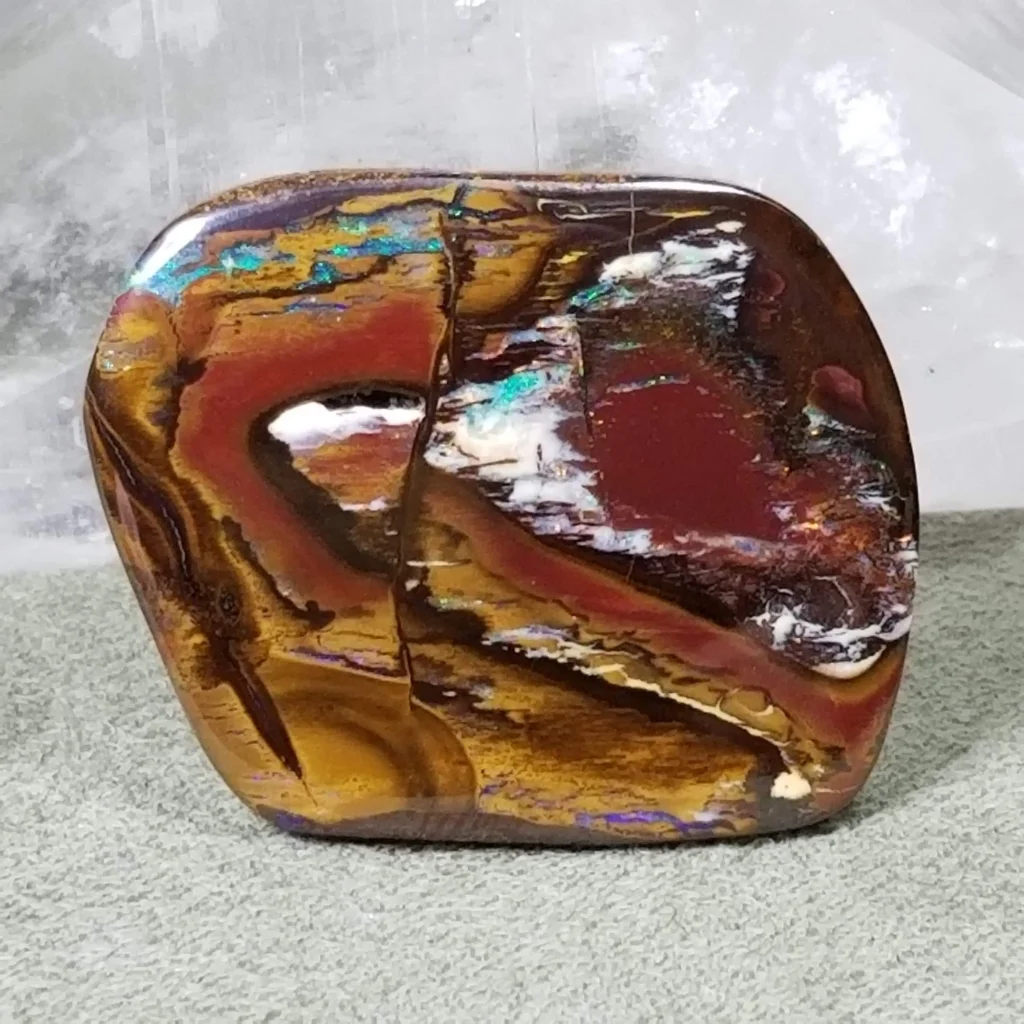
Yowah Opal mining sites are predominantly located in and around the small outback town of Yowah in Queensland, Australia. The region is renowned for its unique Yowah Nut Opal, which forms within ironstone nodules found in the surrounding landscape.
Mining for Yowah Opal typically involves small-scale operations, often carried out by individual miners or small groups of miners known as “fossickers.” The mining sites in Yowah are scattered across the outback landscape, with miners prospecting in areas where opal-bearing ironstone nodules are known to occur.
Several techniques are used in mining Yowah Opal:
- Open-cut Mining: In open-cut mining, miners excavate the surface of the ground to access the opal-bearing ironstone nodules. This method is commonly used when the opal deposits are close to the surface. Miners may use tools such as picks, shovels, and jackhammers to break apart the ironstone and extract the nodules containing opal.
- Tunneling: Tunneling involves creating underground tunnels or shafts to access deeper opal deposits. Miners may use hand tools or small machinery to dig tunnels and extract the ironstone nodules containing opal. Tunneling requires more extensive infrastructure and is often used in areas where opal deposits are deeper underground.
- Dry Blowing: Dry blowing is a technique used to remove overburden and loosen soil and debris covering opal-bearing ground. Miners use specialized equipment, such as dry blowers powered by diesel engines, to blow away loose material and reveal the underlying ironstone nodules. This method is particularly useful in areas with loose surface material and limited water access.
- Sifting and Sorting: Once the ironstone nodules containing opal are extracted, miners sift through the material to separate the opal from the surrounding rock. This process may involve hand-sorting or using sieves and screens to separate the opal from the ironstone fragments.
Mining for Yowah Opal requires patience, skill, and a deep understanding of the geological characteristics of the region. Miners often work in harsh outback conditions, facing challenges such as extreme temperatures, limited water supply, and remote locations. Despite these challenges, the allure of uncovering a valuable Yowah Nut Opal specimen drives many miners to continue prospecting in this unique and fascinating landscape.
Characteristics and Varieties
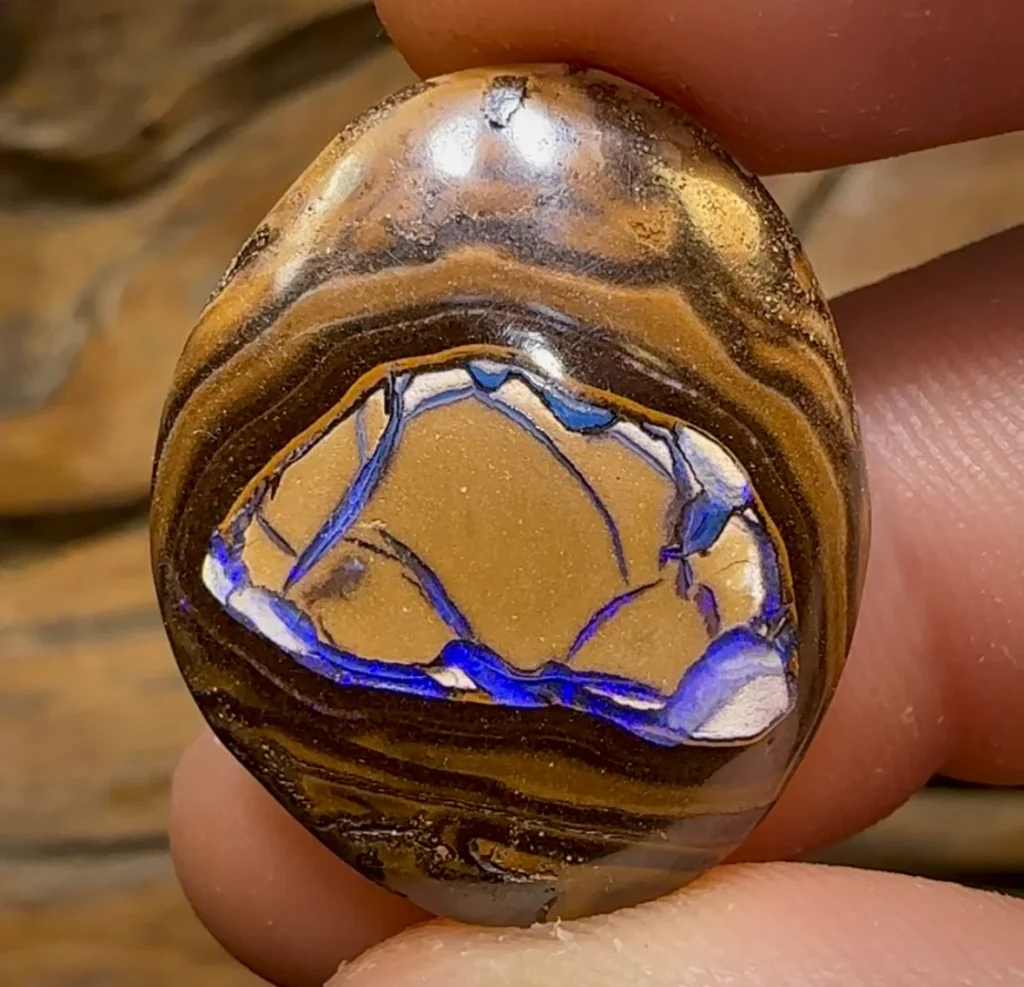
Yowah Nut Opal exhibits a stunning array of colors, patterns, and formations, making it a highly sought-after gemstone among collectors and enthusiasts. Here’s a breakdown of its characteristics and varieties:
Colors and Patterns:
- Yowah Nut Opal displays a wide range of colors, including vibrant reds, oranges, yellows, greens, blues, and purples. The colors often exhibit a mesmerizing play-of-color, where spectral hues dance and shimmer as the gemstone is viewed from different angles.
- The patterns seen in Yowah Nut Opal are incredibly diverse and can include pinfire, broadflash, rolling flash, and harlequin patterns. These patterns are created by the arrangement of silica spheres within the opal and the interaction of light with the gemstone.
Formations:
- Yowah Nut Opal forms within ironstone nodules, which are often spherical or ellipsoidal in shape. The opalization process occurs within these nodules, creating intricate patterns and vibrant colors within the opal.
- The opal may form as solid masses within the nodules or as thin veins and patches. Some specimens may also contain opalized fossil remains or other inclusions, adding to their unique character.
Varieties:
- While Yowah Nut Opal is primarily known for its play-of-color and patterns, there are several distinct varieties based on color, pattern, and formation characteristics.
- Common varieties include:
- Pinfire Opal: Characterized by small, pinpoint flashes of color scattered throughout the gemstone.
- Broadflash Opal: Displays broad, sweeping flashes of color across the surface of the gemstone.
- Harlequin Opal: Rare and highly prized, harlequin opal features a distinct pattern of intersecting, angular patches of color resembling a checkerboard or mosaic.
- Matrix Opal: This variety features opal embedded within its host rock matrix, creating a striking contrast between the opal and surrounding material.
Rarity and Quality Factors:
- Yowah Nut Opal is considered rare due to its limited geographic occurrence and the specific geological conditions required for its formation.
- Quality factors for Yowah Nut Opal include the intensity and distribution of color, the presence of desirable patterns such as harlequin or rolling flash, and the clarity and transparency of the gemstone.
- Larger specimens with vibrant, multi-colored play-of-color and distinct patterns are typically more valuable and sought after by collectors.
Overall, Yowah Nut Opal’s unique colors, patterns, and formations, coupled with its rarity, make it a prized addition to any gemstone collection.
Uses and Applications
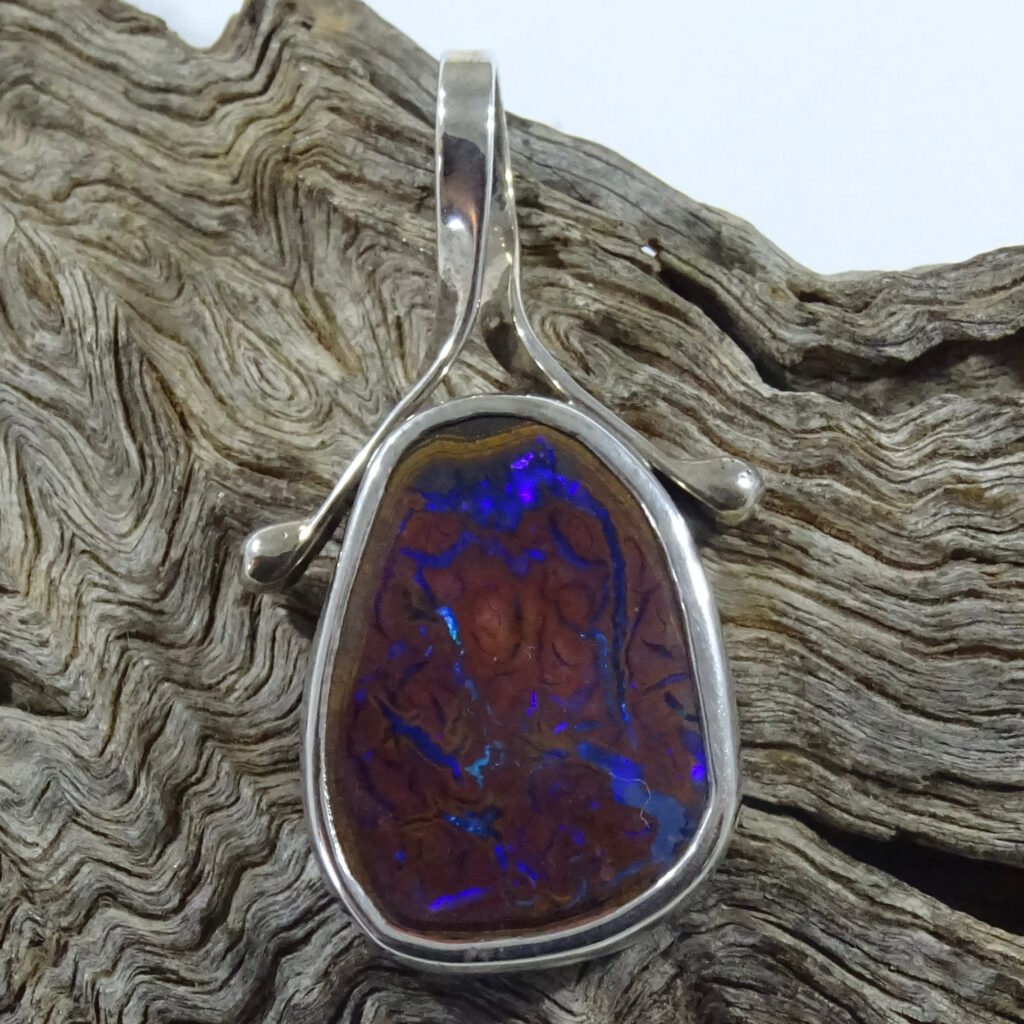
Yowah Nut Opal, with its captivating colors, patterns, and formations, finds various uses and applications in the world of jewelry, art, and design:
- Jewelry: Yowah Nut Opal is a popular choice for crafting exquisite jewelry pieces. It is often used in the creation of rings, earrings, pendants, bracelets, and necklaces. The gemstone’s vibrant colors and play-of-color make it an eye-catching centerpiece in any jewelry design.
- Collector’s Items: High-quality specimens of Yowah Nut Opal are prized by gemstone collectors and enthusiasts. Collectors seek out unique pieces with rare patterns, vibrant colors, and exceptional clarity to add to their collections.
- Art and Sculpture: Yowah Nut Opal’s natural beauty inspires artists and sculptors to incorporate it into their works of art. Opal can be used to create intricate mosaics, sculptures, and decorative objects, adding a touch of elegance and color to any artistic creation.
- Healing and Spiritual Practices: In some cultures, opal is believed to possess metaphysical properties that promote emotional healing, creativity, and spiritual growth. Yowah Nut Opal may be used in crystal healing practices, meditation, and spiritual ceremonies to harness its purported energies and vibrations.
- Investment: High-quality Yowah Nut Opal specimens, particularly those with exceptional color and clarity, can appreciate in value over time, making them a potential investment opportunity for collectors and investors.
- Fashion Accessories: Opal is often used in fashion accessories such as belt buckles, cufflinks, brooches, and hair accessories. Its versatility and striking appearance make it a popular choice for adding a touch of elegance and sophistication to any outfit.
- Interior Design: Yowah Nut Opal can be incorporated into interior design elements such as countertops, tabletops, wall panels, and decorative accents. Its unique colors and patterns can enhance the aesthetic appeal of any space, creating a luxurious and inviting atmosphere.
Overall, Yowah Nut Opal’s versatility, beauty, and rarity make it a prized gemstone with a wide range of uses and applications across various industries and artistic endeavors. Whether it’s adorning jewelry pieces, inspiring works of art, or adding elegance to interior spaces, Yowah Nut Opal continues to captivate and enchant people around the world.




































